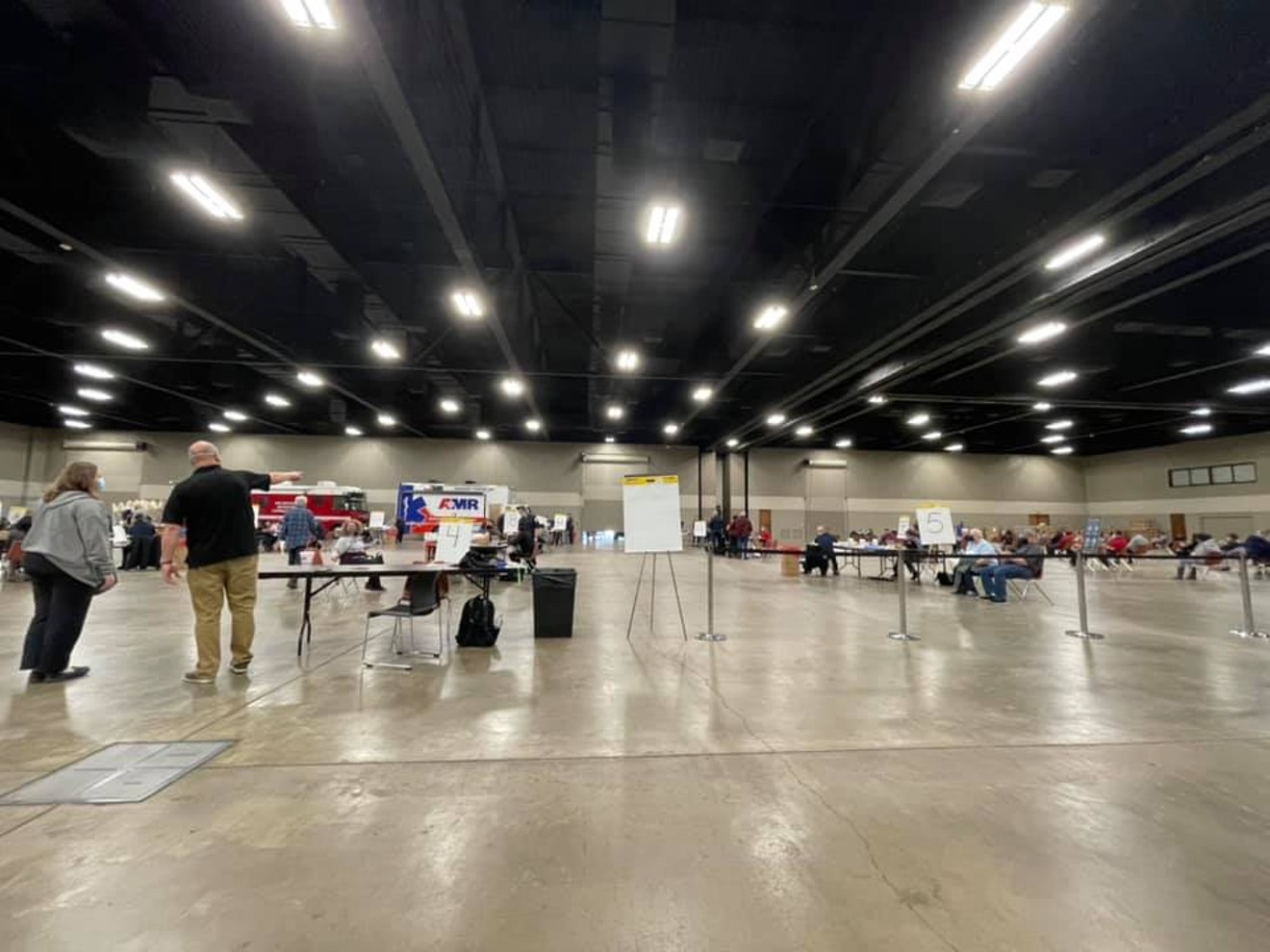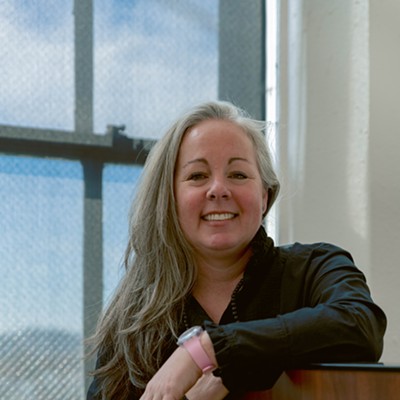Confused by the vaccine rollout? Good, then you’re right on track. On Tuesday morning the Dallas County Commissioners Court convened for their first meeting of the year and discussed vaccinations, where we are now, how we got here and the path forward.
As usual for the past nine months, the first batter up was Dr. Philip Huang, Dallas County’s director of health and human services. Early on, commissioners wagged their phones at him, asking questions about the distribution map, which raises more questions and serious concerns than answers or peace of mind.
But, before we dive into the map, in the first three weeks of the vaccine rollout, Huang reported, 85,500 doses have been administered locally, that's about 3% of Dallas County's population.
Huang also provided data on exactly who has received the vaccine so far. Phase 1A-Tier 1 is intended to cover all frontline health care employees, particularly those who work directly with patients who are positive or high-risk. There are between 29,000 to 44,000 individuals in this tier in Dallas County, and Huang said most have been offered the opportunity to have the vaccine, but emphasized several times that a significant number “want to wait” on getting immunized.
Phase 1A also includes staff and patients at long-term care facilities; about 23,000 to 32,000 people. These vaccinations are in progress.
And, 5,600 EMS workers have received their first dose. There are also about 38,000 home health care workers, who are being vaccinated.
There are still as many as 35,000 people in Phase 1A in Dallas County who need shots. County Judge Clay Jenkins told the court that Dallas County should receive 2,000 shots a day next week. And remember, everyone needs two shots, spaced three weeks apart. So, the county is weeks out from completing the first group.
Complicating the plan, last week Texas Gov. Greg Abbott hastily opened up vaccines to Tier 1B when 1A wasn’t completed yet after reading faulty data that indicated shots were sitting on a shelves going unused. The shots had been used, the spreadsheet tracking them just hadn’t been updated.
As demonstrated by the long lines in Tarrant County this past Sunday, Phase 1B includes a wide swath of the population; anyone 65 or older or anyone 16 years or older with an increased health risk, which doesn’t require any type of verification or documentation. Risks include obesity, diabetes, cancer and other ailments. Administering vaccines to this group will be massive; for reference UT Southwestern in Dallas alone has 300,000 patients in Phase 1B.
What About This Map?
The Texas Department of State Health Services (DSHS) has launched an interactive map of vaccine provider locations. Based on comments from Jenkins, it too is a work in-progres; he said they are considering the Kay Bailey Hutchison Convention Center as a potential massive immunization center; the map indicates it's already stocked.
Even more noticeable on the map is a gaping disparity of locations south of Interstate 30 and particularly southeast Dallas County, which has a predominantly Black population. The sites now are concentrated at medical facilities, which this area historically lacks, a fact not lost on Jenkins. He said that populations of people who don’t have a “medical home” are who the county needs to work to vaccinate first and that, collectively with other entities across the area, they are working on an equity tool.
“We look at ZIP codes that don’t have a medical home, we can factor in ZIP codes that are hardest hit by COVID and have those that have the least amount of insurance and the lowest average wage,” Jenkins said.
The county plans to create a large scalable vaccination center, either in Fair Park or at the Kay Bailey Hutchison Conference Center, that will allow for plenty of indoor space for people to wait before and to be monitored after getting vaccinated.
Jenkins said they have secured “ample space for long-term storage at UT Southwestern,” but he doesn’t expect to need the space immediately since the containers that store the vaccines can keep the viles at the appropriate temperatures for up to two weeks; an open vile has a lifespan of five hours.
“Using Fair Park as an example, it needs to be scalable,” Jenkins said. “It might be 2,000 [vaccinations] this week, but it might be 5,000 the next. We think the opportunity to logistically execute scale advantages outweighs the advantages of multiple locations.”
Originally the plan was to have these facilities ready for the projected Phase 1B influx in February, giving counties time to create space and the state time to complete a registration site. Now they’ve been caught off guard.
“The long-term plan is for that computer system to be the repository for information and facilitate the equitable and transparent distribution of shots,” Jenkins said. But, since it’s not ready, he encourages people to sign up through doctors or hospitals they’ve visited in the past three years. They can also sign up on the county’s site. “You can be an 18 year old marathon runner and sign up with us. You won’t be in Phase1B, but we’ll get to you.”
Jenkins told the Observer it could be summer or fall before most people are vaccinated.
He also urges people not to extrapolate too much based on current immunization rates, pointing out that companies are ramping up production and there are more vaccines from other manufacturers in the pipeline.
Dr. Huang emphasized that at this time there is is a very limited vaccine supply. They’re trying to get frontline workers and long-term care facilities first and when they get more, they’ll let you know.
[
{
"name": "Air - MediumRectangle - Inline Content - Mobile Display Size",
"component": "18855504",
"insertPoint": "2",
"requiredCountToDisplay": "2"
},{
"name": "Editor Picks",
"component": "17105533",
"insertPoint": "4",
"requiredCountToDisplay": "1"
},{
"name": "Inline Links",
"component": "18349797",
"insertPoint": "8th",
"startingPoint": 8,
"requiredCountToDisplay": "7",
"maxInsertions": 25
},{
"name": "Air - MediumRectangle - Combo - Inline Content",
"component": "17105532",
"insertPoint": "8th",
"startingPoint": 8,
"requiredCountToDisplay": "7",
"maxInsertions": 25
},{
"name": "Inline Links",
"component": "18349797",
"insertPoint": "8th",
"startingPoint": 12,
"requiredCountToDisplay": "11",
"maxInsertions": 25
},{
"name": "Air - Leaderboard Tower - Combo - Inline Content",
"component": "17105535",
"insertPoint": "8th",
"startingPoint": 12,
"requiredCountToDisplay": "11",
"maxInsertions": 25
}
]













